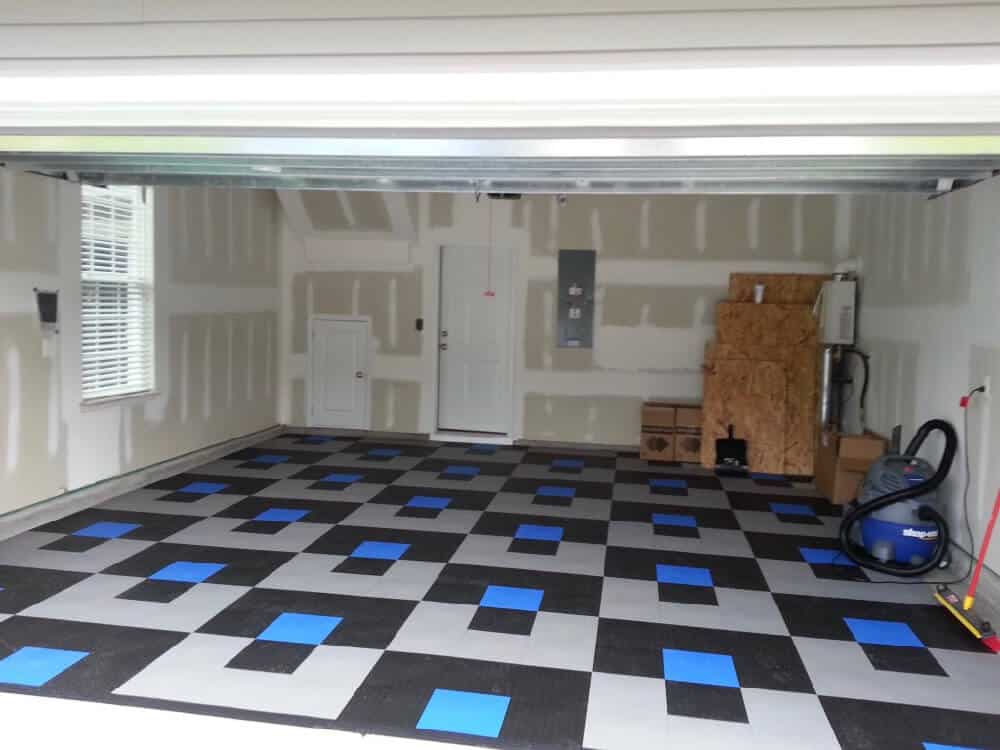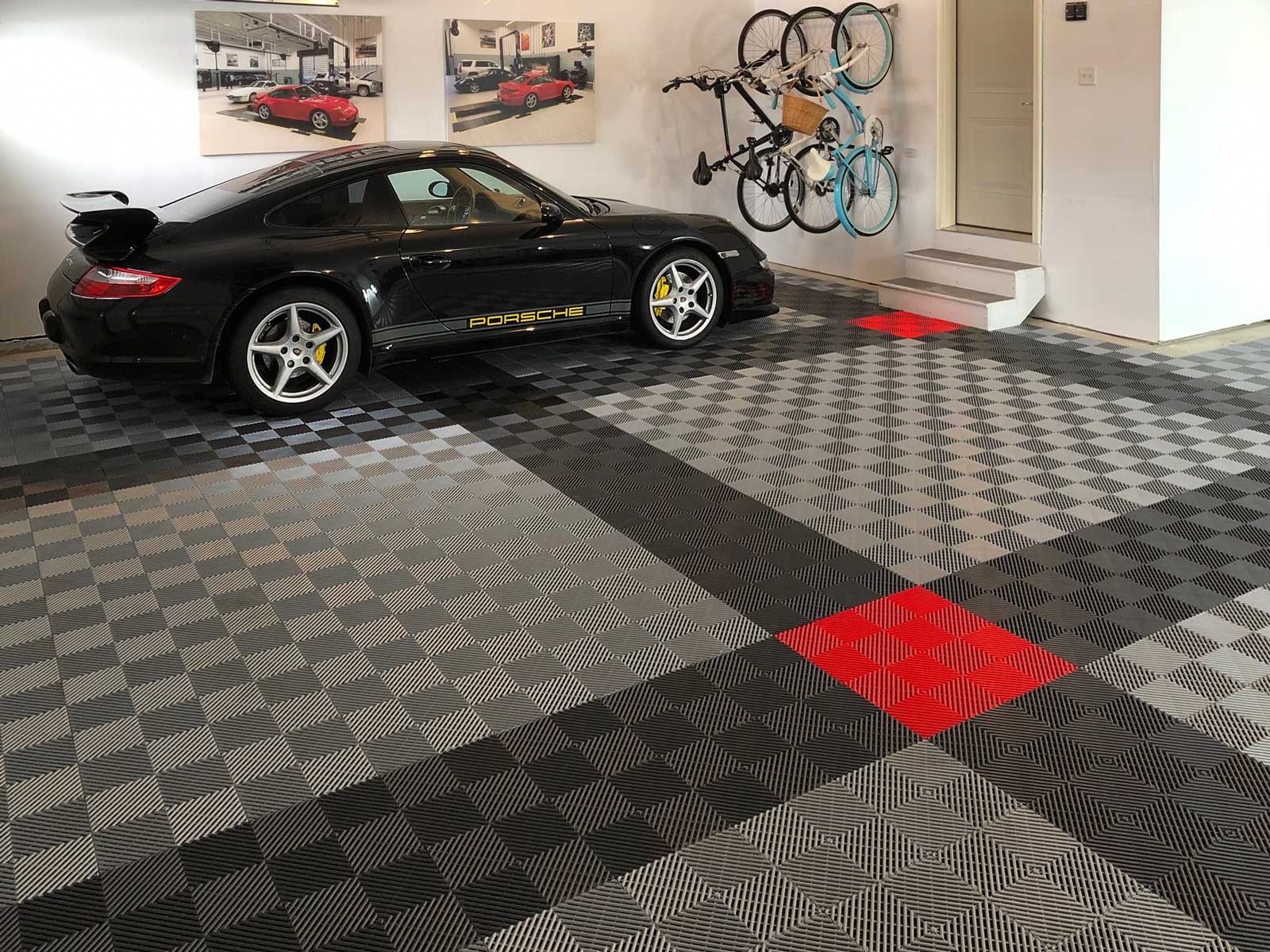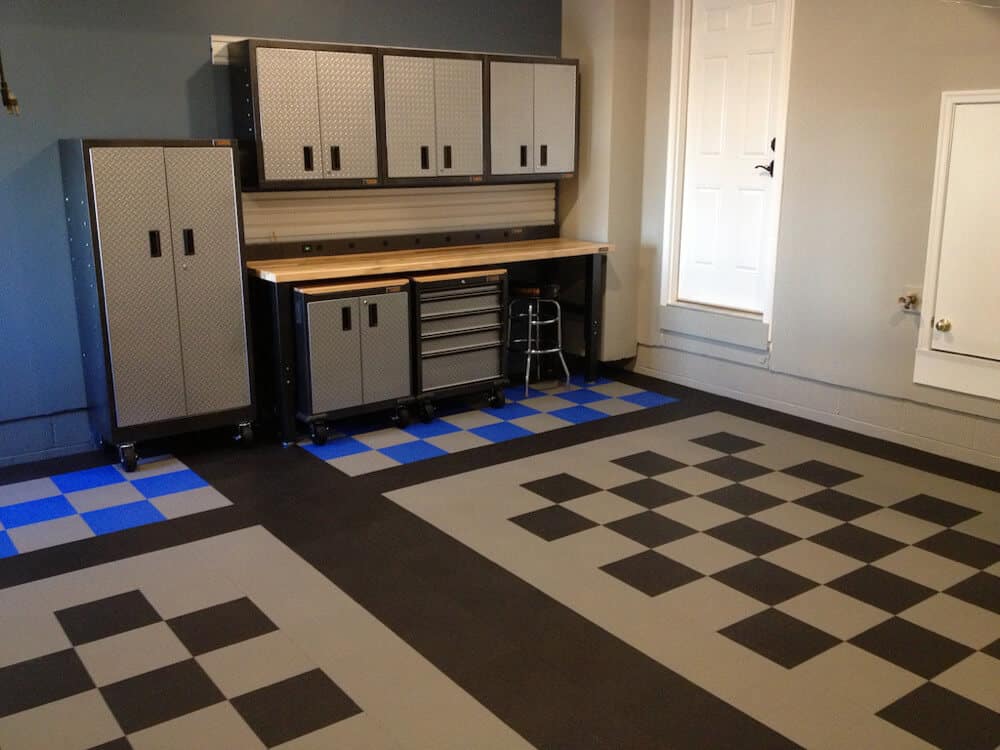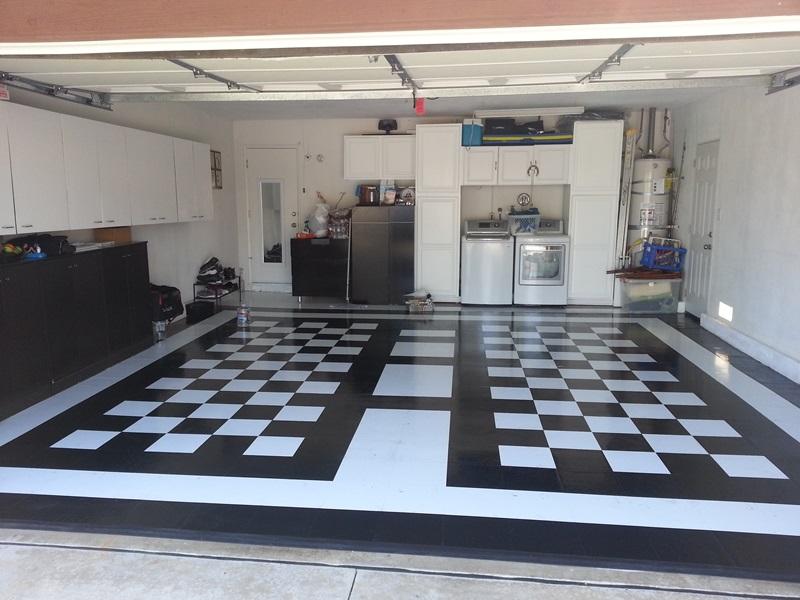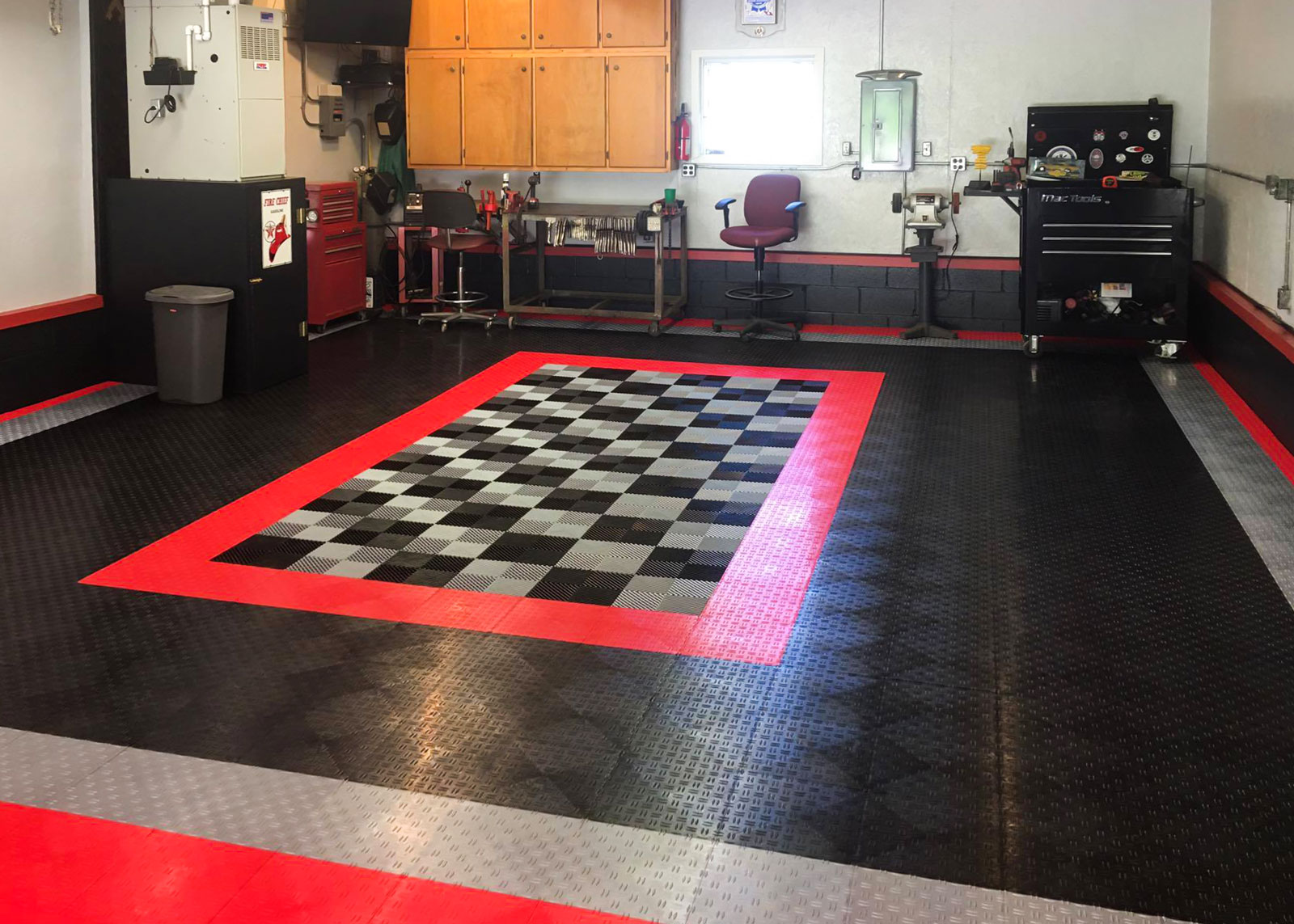Garage Floor Tiles Design: A Comprehensive Guide
Garage floor tiles offer a versatile, durable, and aesthetically pleasing solution for enhancing the appearance and functionality of your garage. With a wide range of materials, colors, and patterns available, you can create a customized and unique look that suits your style and needs. This comprehensive guide explores the benefits of garage floor tiles, different types of tiles, design ideas, installation steps, and maintenance tips to keep your garage floor looking its best.
Benefits of Garage Floor Tiles
- Durability Garage floor tiles are designed to withstand heavy loads, impacts, and abrasion, making them highly durable. They can handle the weight of vehicles, tools, and equipment without cracking or showing signs of wear. This durability ensures that your garage floor remains in excellent condition for years to come.
- Easy Installation Garage floor tiles are relatively easy to install, often featuring interlocking systems that snap together without the need for adhesives. This ease of installation makes them a popular choice for DIY enthusiasts. You can transform your garage floor in a short amount of time without the need for professional assistance.
- Aesthetic Appeal With a wide range of colors, patterns, and textures available, garage floor tiles allow you to create a customized and visually appealing floor. You can choose tiles that match your style and the overall design of your garage. From classic checkerboard patterns to modern geometric designs, the possibilities are endless.
- Slip Resistance Many garage floor tiles are designed with textured surfaces that provide slip resistance. This added safety feature is particularly important in areas prone to spills and moisture. Slip-resistant tiles reduce the risk of accidents and create a safer environment in your garage.
- Easy Maintenance Garage floor tiles are easy to clean and maintain. The non-porous surfaces prevent stains and spills from penetrating, making regular cleaning a breeze. Most tiles can be cleaned with a simple sweep and mop, ensuring that your garage floor remains looking its best with minimal effort.

Types of Garage Floor Tiles
There are several types of garage floor tiles available, each offering unique characteristics and benefits. Here are some popular options:
PVC (Polyvinyl Chloride) Tiles PVC tiles are a popular choice for garage floors due to their durability and flexibility. They are resistant to chemicals, oils, and stains, making them ideal for garage environments. PVC tiles are available in various colors and patterns and often feature interlocking systems for easy installation.
Rubber Tiles Rubber tiles provide excellent shock absorption and slip resistance, making them a practical choice for garages used as workshops or home gyms. They are durable, resistant to impacts, and comfortable underfoot. Rubber tiles are available in a range of colors and thicknesses, allowing for customization.
Interlocking Modular Tiles Interlocking modular tiles are designed to snap together without the need for adhesives. They are typically made from durable materials such as PVC or polypropylene. These tiles are available in various patterns and colors, allowing for creative designs. They are easy to install and can be removed or replaced as needed.
Ceramic and Porcelain Tiles Ceramic and porcelain tiles offer a classic and elegant look for garage floors. They are durable, resistant to moisture, and easy to clean. These tiles are available in a wide range of colors, patterns, and finishes, allowing you to create a customized and stylish garage floor. Proper installation and sealing are essential to ensure longevity.
Epoxy Coated Tiles Epoxy coated tiles combine the durability of tiles with the protective properties of epoxy coatings. These tiles are resistant to chemicals, stains, and abrasion, making them ideal for garage environments. Epoxy coated tiles are available in various colors and can be customized with decorative elements such as metallic flakes.
Design Ideas for Garage Floor Tiles
Garage floor tiles offer endless design possibilities to create a unique and customized look. Here are some design ideas to inspire you:
Checkerboard Pattern The classic checkerboard pattern is a timeless choice that adds a touch of elegance to any garage. This design involves alternating tiles of contrasting colors, such as black and white or blue and gray, to create a grid-like pattern. The checkerboard pattern works well in both modern and traditional garages, adding a sense of sophistication.
Geometric Patterns Geometric patterns are a modern and stylish choice for garage floors. This design involves arranging tiles in various geometric shapes, such as hexagons, diamonds, or triangles. Geometric patterns create a bold and contemporary look, adding visual interest and creativity to the garage.
Racing Stripes For car enthusiasts, racing stripes are a fun and dynamic design option. This involves creating stripes with tiles of contrasting colors, running parallel to each other down the length of the garage. Racing stripes add a sporty and energetic feel to the garage, making it the perfect backdrop for showcasing vehicles.
Border Designs Adding a border design to the garage floor creates a framed and polished look. This design involves using tiles of a different color or pattern along the edges of the floor to create a border. Border designs add definition and structure to the space, enhancing the overall aesthetic.
Custom Logos and Patterns For a truly personalized look, consider incorporating custom logos or patterns into the garage floor design. This can include adding a company logo, a family crest, or a custom pattern that reflects your style. Custom logos and patterns make the garage floor unique and memorable.
Installation Steps for Garage Floor Tiles
Proper installation is essential to ensure the durability and appearance of garage floor tiles. Follow these steps for a successful installation:
Preparing the Subfloor Ensure that the subfloor is clean, dry, and level. Remove any existing flooring, such as carpet or old tiles, and repair any imperfections. Use a level to check for any low spots and fill them as needed. A smooth and even subfloor is essential for a successful installation.
Planning the Layout Plan the layout of the tiles to ensure a balanced and visually appealing result. Measure the garage and determine the direction in which the tiles will be installed. Consider starting along the longest wall to create a seamless and cohesive look. Dry-lay the tiles to visualize the pattern and make any necessary adjustments before beginning the installation.
Installing the Tiles Begin installing the tiles by laying the first row along the longest wall in the garage. Use spacers to maintain even gaps between the tiles. Align the first tile with the spacers and ensure it is level. Continue laying the tiles row by row, pressing them firmly into place. Use a tapping block to ensure a tight fit between the tiles.
Cutting and Fitting Measure and cut the tiles to fit around corners, doorways, and other obstacles. Use a tile cutter or utility knife for precise cuts. Ensure that the tiles fit snugly and maintain even gaps throughout the installation. Continue installing the remaining tiles, maintaining the pattern and alignment.
Finishing Touches After installing all the tiles, remove the spacers and inspect the floor for any gaps or uneven areas. Make any necessary adjustments to ensure a smooth and even surface. Clean the floor to remove any dust or debris from the installation process. Allow the tiles to settle for a few hours before moving vehicles or heavy equipment back into the garage.
Maintenance Tips for Garage Floor Tiles
Proper maintenance is essential to keep your garage floor tiles looking their best and ensuring their longevity. Here are some tips to help you care for your garage floor tiles:
Regular Cleaning Sweep or vacuum the floor regularly to remove dust, dirt, and debris. Use a damp mop with a mild cleaner to clean the surface periodically. Avoid using harsh chemicals or abrasive cleaning tools that can damage the tiles and grout.
Spill Management Wipe up spills immediately to prevent staining or damage to the tiles. Use a clean cloth or paper towel to blot the spill and avoid rubbing, as this can spread the liquid and cause further damage. For sticky or stubborn spills, use a damp cloth and a gentle cleaner.
Protective Measures Place mats or rugs in high-traffic areas and entryways to protect the tiles from wear and tear. Use furniture pads under the legs of chairs, tables, and other furniture to prevent scratches and dents. Avoid dragging heavy objects across the floor, as this can cause damage to the tiles.
Grout Maintenance Grout lines can accumulate dirt and stains over time. Clean the grout lines regularly using a grout cleaner and a stiff brush. For stubborn stains, consider using a grout whitener to restore the original color. Sealing the grout lines can help protect them from moisture and stains.
Periodic Inspections Inspect the garage floor tiles regularly for any signs of damage, such as chips, cracks, or loose tiles. Address any issues promptly to prevent them from worsening. Small chips and cracks can be repaired with a tile repair kit, while larger repairs may require professional assistance.
GarageDeck® Coin-Top Garage Floor Tiles
GarageTrac® Garage Flooring Tiles
Related Posts:
